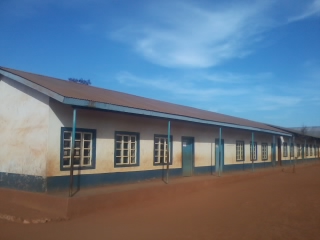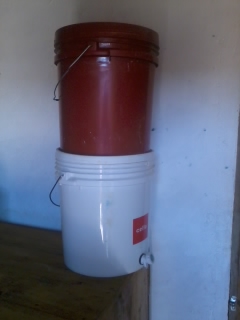Location
Itambo, Wang’ing’ombe District, Njombe Region, Tanzania
Community Description
The village of Itambo is located 47 km outside of Njombe town. In order to reach Itambo, one must take a two-hour bus ride down mostly dirt roads. The village consists of 2,200 individuals, with the vast majority of the people earning their livelihood through farming.

Currently, Itambo has very little infrastructure. However, one thing they do have is a primary school in which the village takes great pride. Currently, 386 students ranging from 5-15 years of age are enrolled at the primary school run by 8 teachers.
Problem Addressed
Like many rural communities in Tanzania, Itambo suffers from numerous water issues. Currently one of the biggest is a lack of clean drinking water for the community as a whole but specifically for students attending the primary school.
Currently, the water source for the school is a water pump attached to an underground water source a five-minute walk from the school. While the pump has fairly clean water, contaminants from surrounding agricultural processes as well as unclean vessels used to transport the water back to the school can contaminate the water.
Consumption of contaminated water can lead to serious waterborne illnesses that can reduce the number of days a child is able to attend school. Low school attendance due to health issues makes it very difficult for a child to succeed academically.
Project Description
This project will provide clean drinking water for the students and teachers of Itambo Primary School by constructing and installing 20 bucket water filters.
The filter consists of two ten-liter buckets, one ceramic candle water filter, and one spigot for easy removal of the clean water. Peace Corps Volunteers in Tanzania are taught to make these filters during pre-service training and are encouraged to use them in their own homes.
To construct the filter a hole is drilled in the bottom of the top bucket and the lid of the bottom bucket and the candle filter is inserted into that opening. Unclean water is poured into the top bucket and passes through the filter. It then exits the filter and collects as clean water in the bottom bucket.
Training as to how to construct the filters will be given to the primary school teachers as well as to two village craftsmen. After the training, the teachers and craftsmen will assist in constructing the 20 bucket filters.
 By including members of the community as well as the school, capacity will be built and the craftsmen can use this new skill as an income-generating activity within the village in the future.
By including members of the community as well as the school, capacity will be built and the craftsmen can use this new skill as an income-generating activity within the village in the future.
In addition to the initial training, one month later a follow-up training will be conducted to explain proper filter maintenance and cleaning. At that time, every three months thereafter, all of the filters will be cleaned. The trained teachers will be responsible for the filter cleaning and upkeep.
Once the filters are constructed two filters will be placed in every classroom, one in the teachers’ office, and the remainder will be placed near where the students eat lunch. The first day the filters are in use the students will be given a lecture stressing the importance of clean drinking water as well as the importance of staying hydrated to encourage increased water consumption.
In addition to the filters being present for use at school, the students will also be taught how to construct and maintain the filters and where the filter parts can be purchased, with the hope that they will discuss the project with their parents and some individuals will purchase filters for their homes. Surveying the students both at one and three months after the program is implemented will monitor the propagation of filters within the community.
The students will also be given a lecture on other low-cost methods of water disinfection (such as solar disinfection) and given handouts that they can bring home to discuss with their caregivers. In the future similar lectures will be given throughout the community.
Water Charity funds will be utilized to purchase materials to construct the filters, to buy stands that the filters will be placed on, transportation costs of the materials, as well as the printing of handouts that will be distributed to the students.
Project Impact
386 students and 8 teachers will benefit from the project.
Peace Corps Volunteer Directing Project
Kacey Gergely
Comments
By reducing the students’ exposure to contaminated water at school, the chances of contracting waterborne illnesses will be decreased, thereby reducing the number of school days that are missed due to illness. The educational component will ensure compliance with the protocol and proliferation of the technology.
Dollar Amount of Project
$320.00
Donations Collected to Date
$320.00 + additional amounts
Dollar Amount Needed
$0.00 – This project has been fully funded through the generosity of friends and family of Peace Corps Volunteer Kacey Gergely. Additional amounts have been contributed for future projects.
This project has been concluded.